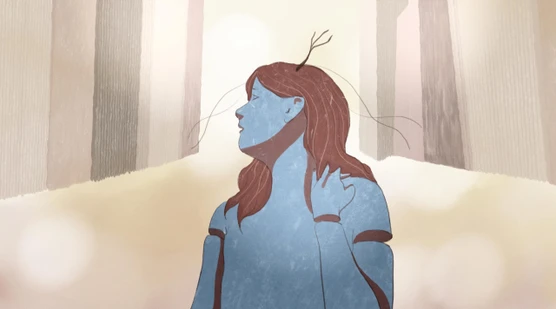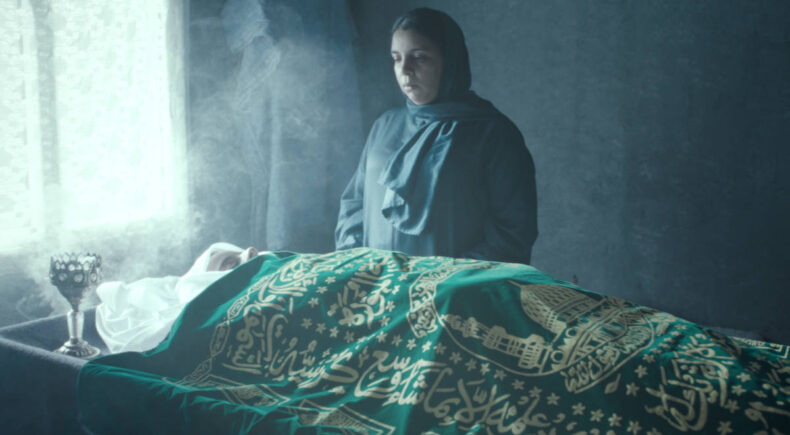21st Hollyshorts Film Festival Review Roundup: Part 3
- Brandon MacMurray
- Aug 18
- 5 min read

One in Fifty, dir. Haley Watson

Legendary golfer Ben Hogan offers up a famous quote:
"Your name is the most important thing you own. Don't ever do anything to disgrace or cheapen it."
But what happens when someone else does that for you? Haley Watson’s gripping new documentary One in Fifty dives deep into a personal story of identity theft. The documentary short mostly acts as a vehicle for Renata Galvão to tell her unbelievable story of having her identity stolen when she was a six year old girl and how it followed her through her life.
With a background in journalism, Renata is a natural at storytelling as she emotionally shares her story from beginning to end. In what is probably a mix of editing and Renata’s eloquence, the documentary excels at keeping the viewer engaged as it gives enough details to fully understand Renata’s plight without feeling bogged down in any way with unnecessary information.
Haley Watson’s creativity shines as she creates an assemblage of childhood photos and snapshots of Renata’s life along with various interrelated footage to match the energy of the story. Renata’s journey to take back her name is bold and empowering as she discusses her confused feelings as a child, through her teenage years of constantly having to build up and tear down her life, to finally taking matters into her own hands. As a viewer, you can’t help but to cheer her on along the way.
The family aspect of Renata’s story brings you in closer while still setting clear boundaries. Renata refuses to sell out her mother while being slightly critical about how her situation was handled when she was a child. She empathizes with her mom and her mistake. While it is hinted at the beginning that her twin sister also fell victim to the social security scam, the lens of the story never shifts and remains focused on Renata’s story, as it should. Renata does not give an ounce of power in the story to the criminal who tried to tear down her name by saying theirs. This all gives the documentary a feel of being authentically Renata.
Overall, this documentary is worth the watch, as the issue of identity theft is more prevalent than you'd believe. Astoundingly, one in fifty fall victim to scams like the one that derailed Renata's life. The documentary is available to watch on YouTube at: https://www.youtube.com/watch?v=tU-lC6_801E&t=932s
Review by: Brandon MacMurray
Hypersensitive (Hypersensible), dir. Martine Frossard

The animated short Hypersensitive (Hypersensible) by Martine Frossard depicts a young woman traveling in a car through dense traffic, country roads and eventually through life itself. As we journey together the scenes go from very mundane and tactile, to surrealistic fantasies. Alongside this transition we see pictures of a patiently growing, maturing tree in a forest. The tree and the young woman slowly morph together into one, in a nod towards the healing powers of nature as well as the maturity that comes with age as we transition from saplings into full trees.
Expertly blended into this symbolism is various shots that induce sharp jolts of very specific and familiar feelings. Some heartwarming like surfing your hand on the wind zipping by as the car speeds on, or the music blasting as the sun slowly sets over winding country roads. Others much harsher or irritating like your itchy socks refusing to stay up, static from the radio not quite dialed in correctly, or the drowning feeling of being a small insignificant dot in a city that is seemingly devouring you.
Some scenes are recurring throughout the film, like the woman’s hair always having just a couple strands flickering unruly in the wind. Another recurring shot we see is the face of strangers, here depicted as a single watching, judging eye staring you down.
I found the film incredibly moving, and I kept thinking back to specific moments in life where my feelings aligned perfectly with the moving images on screen, even if the situations themselves did not. Even moving into the more dreamlike section of the film the emotional state of the main character comes through loud and clear, and it left me with a warm sense of nostalgia. Void of any real dialogue it is definitely more of a feeling that you need to lean into, but once you do it rewards you greatly.
Review by: Robin Hellgren
Aicha, dir. Sanaa El Alaoui

The relationship between parents and children can be difficult at times for everyone, regardless of class, country, or race. During a child's growth, the clash between generations is inevitable. There is often no seeing eye to eye, particularly in the context of generational differences, and morals. Moroccan director, Sanaa El Alaoui, approaches this theme in her short film, Aicha. The film narrates the story of a mother (Hind Dafer) and her daughter (Manal Bennani), primarily analyzing the relationship that contains a gap between them – emotionally, culturally, and religiously. Consequently, a massive traumatic event exposes the regret of each individual for the previous relationship and affection.
El Alaoui chooses the Moroccan cultural and societal background as the backdrop of a problematic reality for women in the country. Firstly, the director approaches religion as a central aspect of one's life, from birth to death. Additionally, El Alaoui utilizes the symbolism of the burial ceremony in the Islamic culture to visually connect life and death. The goat's blood is seen bleeding into the beautiful, large rug that features a mourning individual and the wrapping of the body in the preparation for it conforming to the Islamic culture. Consequently, the colours are essential to demonstrate the hierarchy of their emotional state. The connection between mother and daughter is established through the act of a daily bath, which happens in a dark and brown bathroom. On the other hand, the burial takes place in a lightened space, featuring variations of red to contemplate the passing of the individual, contrasting life and death and defying the viewers expectations. Usually, death is symbolized in the color black, either in the clothes, decoration, or space. The director and her crew flip that to juxtapose the ironies of life.
The film finds its strength in the debate of abuse and lack of respect for women in Morocco. The violence on the beach contrasts with the work of women, which uses an analogical camera to portray a vintage aspect of life's beauty. This is emphasized through dialogue with her mother, who uses an old radio. The director decides to represent a violent act, choosing the visual impact on the audience. However, this is most effective through the animation of a fish getting cut, which explicates the brutality and lack of humanity in the act of murdering a woman in the middle of the sea. Thus, El Alaoui creates impact through the rhyme between suffering and love.The performance by Hind Dafer exposes the pain and despair of losing the person most precious to her. Her explosiveness demonstrates the pain in a life cut short and the emotional result of that.
Ultimately, Aicha creates a visual vibrance that flips the conventions when it comes to stories of grief and exposes the violent nature of living as a woman in Morocco.
Review by: Pedro Lima




Comments